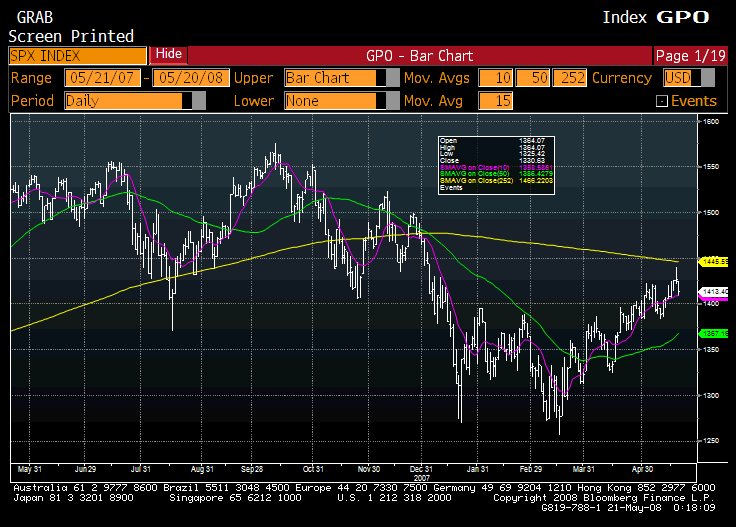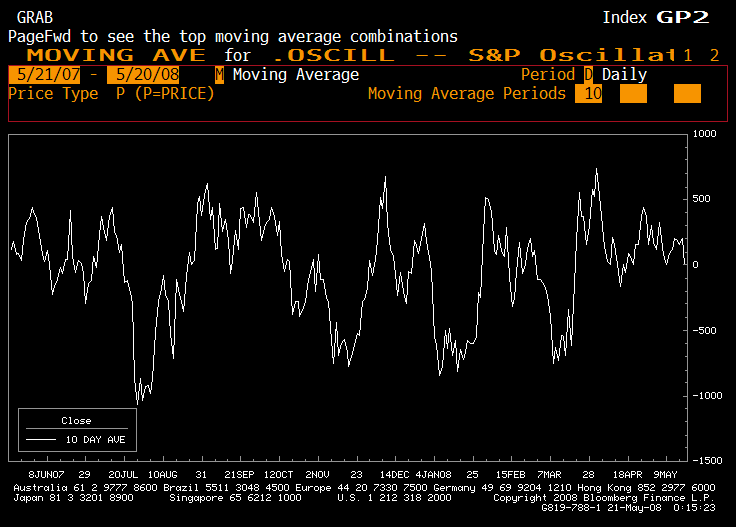Malthus, the False Prophet
For those with access to The Economist, I would advise reading Malthus, the false prophet.? In one sense, Malthus was a guy who ran afoul of the idea that you shouldn’t make predictions about the long term, or, assume that people can’t make changes to solve problems.
This is one reason that I rarely go in for “total disaster” scenarios.? Disaster, yes.? Big problems, sure.? But total collapse-type scenarios rarely happen because people act individually, corporately, and through their governments (which want to stay in power).? There are rare cases of failure — for a recent one, think of the fall of the Soviet Union after the failure of Chernobyl.? And, that was a relatively benign failure in aggregate.
To give another example, the Y2K problem was real, but the hysteria over it drove companies, politicians and bureaucrats to solve the problems, and the problems were largely solved with a year to spare.
The current worry is that high energy and food prices will get worse as our world continues to grow, and that poverty will increase as some can’t buy necessities.? Metal prices will rise as well as there will be more need for construction materials.? Who knows?? Perhaps timber and cement will come into short supply as well.
High prices will help solve these problems.? We have many bright businessmen that want to make money off this, who will drive scientists and applied technologists to find ways of meeting the needs at lower costs.? In the 1970s, once the drive to become less energy-intensive? got going, it was hard to stop.? The R&D kept going for a while even after energy prices started falling, leading demand to fall further.? Also, sustained high prices will lead old technologies like wind and solar to become economic.? I sort of predicted this on RealMoney two years ago:
| David Merkel | ||
| Peak Oil, Socialistic Governments, and Crisis | ||
| 5/9/2006 3:31 PM EDT |
Now, I’m not an expert on energy like Chris Edmonds, so don’t take what I write here too seriously. I write this because of some things I read by some doom-and-gloomers on energy over the weekend. I thought the stuff was nonsense, so I’m not even publishing a link to the articles.
In general, I tend to agree more with the “peak oil” theory than disagree with it, mainly because there haven’t been a lot of new big oil finds, and depletion of old fields continues. “Peak oil” means that global output of oil will not increase beyond a certain level, which either has been reached, or will be reached in the next five years.
Beyond that, the behavior of socialistic governments like Venezuela and Bolivia tend to reduce oil output because they don’t manage the oil and gas deposits as well as those that they replaced. Beyond that, they reduce the incentive to search for new deposits, because the profit motive is reduced, if not eliminated.
So, I’m not optimistic about supply issues in energy, and I haven’t mentioned instability in other oil and gas producing nations. That said, I don’t believe that we are headed for a crisis, as some doom-and-gloomers forecast. If/when oil gets over $100/barrel and stays there, a combination of coal, nuclear, solar and wind will be used to generate electricity, and electric cars will become more common. Coal will be gasified as well. Ethanol will be a marginal contributor to the mix, because it takes a lot of energy to produce.
So, life will change some, and energy will become more expensive, but it won’t be the end of the world by any means. And, the scenario I posit above is a bearish one; things could end up better than that over the next two decades.
Position: none mentioned
Now, I’m not in the camp that says that the prices of food, energy and raw materials are coming down soon.? Changing the behavior of a culture takes time; changing technologies takes time.? The progress will likely come, though, and the process of meeting human needs as our world develops will persist, leading to better overall lives on our planet.
-==-=–==-=-=-=-=-=-=-=-=-=-
PS — It will be interesting to see how our world copes with zero population growth.? One of the dirty secrets of economics is that economies tend to do better with younger overall populations that are growing.? I can see governments, even China’s, adopting tax schemes that favor having large families.? I can also see governments becoming a lot more lenient about immigration for people under the age of 30, and families with children.
Now, this is utter heresy, because at present fertility projections our global population should top out at 9 billion around 2050.? My guess is that many governments will panic between 2020 and 2030, and promote fertility and immigration of the young.? Now, whether you can convince young women who have shed the idea that having and raising children is a large part of what life is about to change their minds is another matter… my guess is that the schemes will amount to little.? But who can tell?? Obviously, I haven’t fully learned from Malthus’ error: I’m on the other side of the debate, but still, I made long term guesses of what might happen.
PPS — Malthus was a minister, but unlike many ministers, he lacked confidence in the providence of God.? As an odd historical aside, that lack of confidence had a surprising effect — much later, another young man considering the ministry read the writings of Malthus, and doubted the goodness of God.? That man was Charles Darwin.? History is more complex than we could make up in a fictional work.





